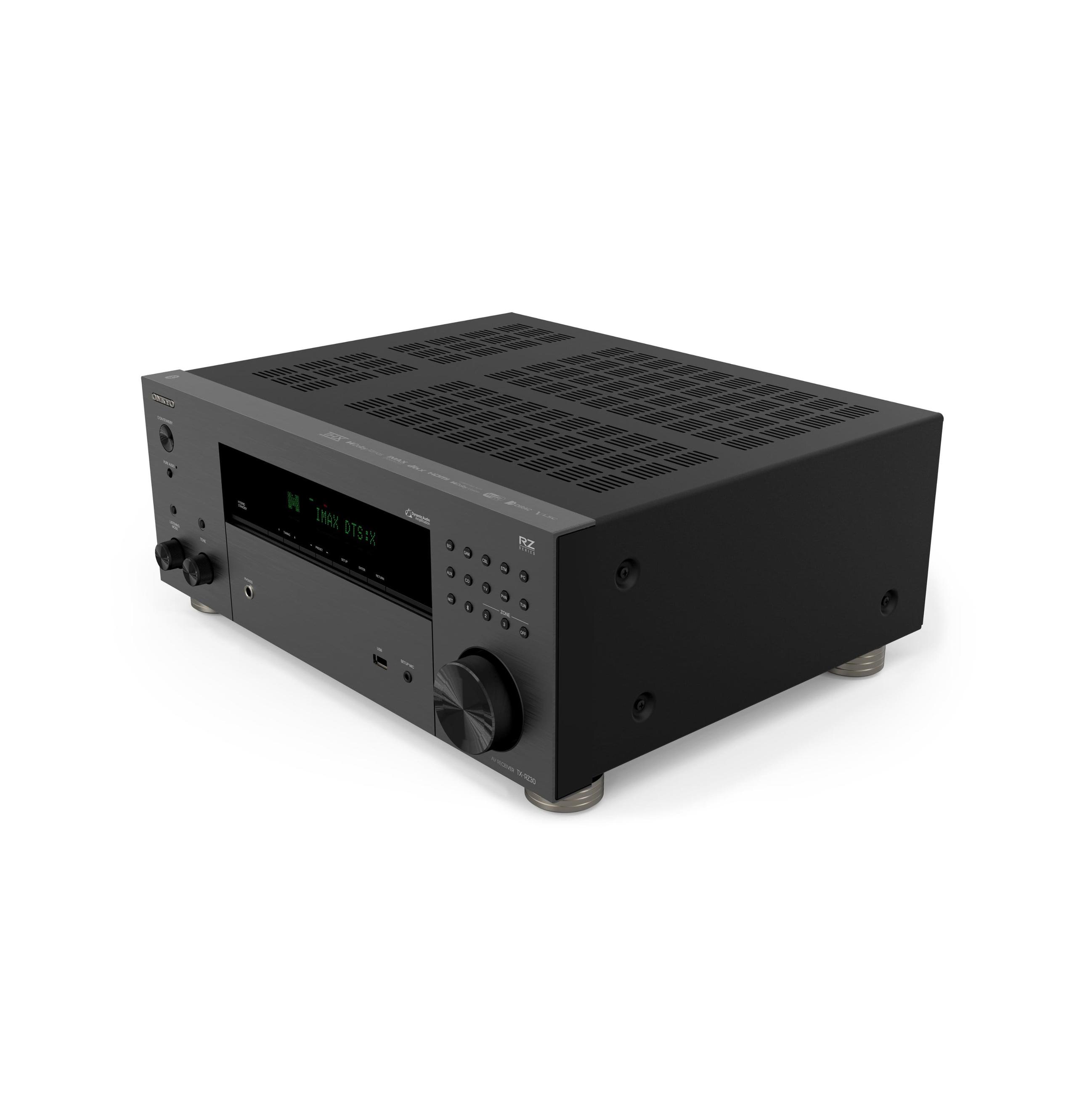
When setting up a home theater, choosing the right AV receiver is crucial - it's literally the brain and heart of your entire system. Today, we're comparing two popular options: the new Onkyo TX-RZ30 ($1,199) and the established Yamaha Aventage RX-A2A ($949).
AV receivers have evolved significantly in recent years. They're no longer just amplifiers with input switching - modern receivers handle complex audio processing, video upscaling, streaming services, and home automation integration. When choosing one, you'll want to consider:
The TX-RZ30, released in late 2023, represents Onkyo's latest technology. It's a premium 9.2-channel receiver that shows how far home theater tech has come. Meanwhile, the RX-A2A, released in 2020, is Yamaha's proven performer in the mid-range segment, offering 7.2 channels of their renowned sound quality.
The TX-RZ30's 9.2 channels provide more setup options. What does this mean practically? You could have:
The RX-A2A's 7.2 channels still offer plenty of flexibility for most rooms:
For most living rooms, 7.2 channels are plenty. But if you're building a dedicated home theater or have a larger space, those extra channels on the TX-RZ30 can make a noticeable difference in immersion.
This is where we see one of the biggest differences. The TX-RZ30 includes Dirac Live, which is considered the gold standard in room correction. Think of it like having a professional audio engineer tune your system. It measures how your speakers sound in your specific room and adjusts accordingly.
The RX-A2A uses Yamaha's YPAO system. While not as advanced as Dirac Live, it's still effective and easier to use. I've set up both systems, and while Dirac Live produces better results, YPAO is more "set it and forget it."
Both receivers handle modern video standards well, but there are some differences:
TX-RZ30:
RX-A2A:
For gaming, the RX-A2A might have a slight edge with its more comprehensive HDMI 2.1 feature set.
Both receivers deliver excellent sound quality, rated at 100 watts per channel. The TX-RZ30's Dirac Live calibration gives it an edge in audio accuracy, especially in challenging rooms. However, Yamaha's legendary sound quality shines through in the RX-A2A - it has that clean, detailed presentation Yamaha is known for.
The TX-RZ30 offers:
The RX-A2A includes:
At $250 more, the TX-RZ30 needs to justify its premium price. Here's what that extra money gets you:
The choice really comes down to your specific needs and space:
Choose the TX-RZ30 if:
Choose the RX-A2A if:
Both receivers are well-equipped for current and upcoming technology. The TX-RZ30 has a slight edge in future-proofing with its extra channels and more advanced processing. However, the RX-A2A still handles all current formats and standards beautifully.
For most users, either receiver will provide excellent performance for years to come. The extra features of the TX-RZ30 are nice to have but not essential for everyone. Consider your space, budget, and how you'll actually use the receiver when making your choice.
Remember, the best receiver is the one that fits your specific needs and setup - there's no one-size-fits-all solution in home theater.
| Onkyo TX-RZ30 ($1,199) | Yamaha RX-A2A ($949) |
|---|---|
| Channel Configuration - Determines maximum speaker setup and Atmos capabilities | |
| 9.2 channels (enables 5.2.4 or 7.2.2 setups) | 7.2 channels (enables 5.2.2 or 7.2 setup) |
| Room Correction - Critical for optimal sound in real-world rooms | |
| Dirac Live (premium solution, more precise) | YPAO (good but basic, easier to use) |
| Power Output - Determines speaker compatibility and maximum volume | |
| 100W per channel (8 ohms, 0.08% THD) | 100W per channel (8 ohms, 0.06% THD) |
| HDMI Ports - Important for connecting multiple devices | |
| 7 in / 2 out (8K/60Hz capable) | 7 in / 1 out (8K/60Hz capable) |
| Gaming Features - Critical for latest gaming consoles | |
| Basic VRR support, limited 4K/120Hz | Full HDMI 2.1 features, all ports 4K/120Hz |
| Multi-room Capabilities - Important for whole-home audio | |
| Zone 2/3, works with Sonos | Zone 2, MusicCast compatible |
| Streaming Support - Affects ease of playing music | |
| Chromecast, AirPlay 2, Spotify Connect | AirPlay 2, Spotify Connect, MusicCast |
| Future-proofing Value - Consider long-term investment | |
| Better equipped (more channels, Dirac Live) | Good but more basic feature set |
| Build Quality - Affects reliability and performance | |
| Premium components, THX certified | AVENTAGE quality, anti-resonance design |
The Onkyo TX-RZ30 ($1,199) is better for dedicated home theaters due to its 9.2 channels and Dirac Live room correction. However, the Yamaha RX-A2A ($949) is still excellent for typical living room setups.
The TX-RZ30 costs $1,199 while the RX-A2A is $949, making a $250 difference. The premium price of the TX-RZ30 brings additional channels and better room correction.
Both receivers output 100 watts per channel into 8 ohms, providing similar power levels for most speakers.
The TX-RZ30 offers more future-proofing with its additional channels and Dirac Live, though both receivers support current video standards.
We've done our best to create useful and informative comparisons to help you decide what product to buy. Our research uses advanced automated methods to create this comparison and perfection is not possible - please contact us for corrections or questions. These are the sites we've researched in the creation of this article: youtube.com - onkyo.com - cnet.com - audioholics.com - theabsolutesound.com - bestbuy.com - audiosciencereview.com - onkyo.com - onkyo.com - ecoustics.com - cine-craft.de - bestbuy.com - safeandsoundhq.com - crutchfield.com - crutchfield.com - usa.yamaha.com - hifimart.com - ca.yamaha.com - usa.yamaha.com - adorama.com - avsforum.com - bestbuy.com